History
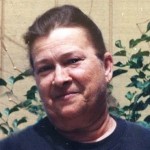 Years ago when my girls were young, the school systems…at least in the Casper area, had a program whereby the kids were checked for symptoms of Streptococcus bacteria, or as we knew it…Strep Throat. Since I was not working outside the home, I volunteered to help with that program. That was where I first met the mother, Pat Neville, of my dear friend, Becky Neville Osborne. Pat taught me the ropes, and we worked together in that program for eight years. Pat has gone on to be with the Lord now, but the friendship that blossomed with her daughter, from her own childhood, has continued through the years, and continues to bless my life every day.
Years ago when my girls were young, the school systems…at least in the Casper area, had a program whereby the kids were checked for symptoms of Streptococcus bacteria, or as we knew it…Strep Throat. Since I was not working outside the home, I volunteered to help with that program. That was where I first met the mother, Pat Neville, of my dear friend, Becky Neville Osborne. Pat taught me the ropes, and we worked together in that program for eight years. Pat has gone on to be with the Lord now, but the friendship that blossomed with her daughter, from her own childhood, has continued through the years, and continues to bless my life every day.
When Pat was teaching me the ropes of the throat culture program, I really didn’t know much about the Streptococcus bacteria, nor about how it had affected my grandmother, Anna Schumacher Spencer many years earlier. Streptococcus bacteria, is the same bacteria that causes Rheumatic fever, and years ago, that was a very dangerous disease. When Strep Throat is not treated with Penicillin to kill the bacteria, the bacteria just continues to run rampant in the system. Rheumatic fever is caused by a combination of bacterial infection and immune system overreaction, and it almost always follows a strep throat infection, which is an infection of the respiratory tract caused by bacteria of the Streptococcus family. The reason for throat cultures in the schools is that children are far more likely to get strep throat than adults…these days  anyway. Years ago, it was anybody’s guess.
anyway. Years ago, it was anybody’s guess.
While my grandmother was living in Casper, Wyoming where my aunts, Laura and Ruth were living at the time, she contracted Strep Throat, and probably didn’t even know it. Then it turned to Rheumatic Fever. Unchecked, Rheumatic Fever can cause heart problems, which was common in children years ago, but is much less common now due to the routine use of antibiotics. In fact, I don’t believe routine throat cultures are performed in the schools anymore. Strep Throat still exists, but now people have to go to their doctor to be swabbed.
Rheumatic Fever is most common in children under 15 years of age, but it can affect adults too…as was the case with my grandmother. As was the case with my grandmother, Streptococcus bacteria can attack the joints. It can also attack the central nervous system, brain and spinal cord, as well as the heart. In the heart the disease affects the inner lining of the heart, including the heart valves, which is known as endocarditis, the muscle of the heart, which is known as myocarditis, or the covering of the heart, which is known as pericarditis.
Sometimes, the body reacts with a huge immune system reaction to the affected areas. The immune system becomes so active that it attacks the affected tissues too. In the joints, this results in a temporary arthritis. In the heart, permanent damage to the heart valves can occur, also increasing the risk of heart problems in later 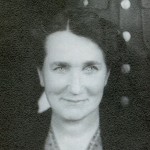 life. Rheumatic fever can also cause problems in the nervous system, but these are usually reversible.
life. Rheumatic fever can also cause problems in the nervous system, but these are usually reversible.
I do know that my grandmother spent her final years confined to a wheelchair, but I always thought it was because she had Rheumatoid Arthritis. Now I wonder if it was because of Rheumatic Fever. I also know that My great grandmother and uncle here sick with something that ended up causing temporary arthritis, so possibly they had it too. I guess I may never know for sure, but I do know that sometimes I wonder if the practice of taking throat cultures should have been stopped. It seems to me that it did a lot of people a lot of good, and probably saved a lives too.
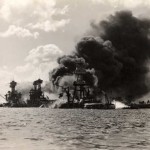 As the 73rd anniversary of the Japanese attack on Pearl Harbor dawns, I have to wonder why it is that the United States always feels that the other side must attack us first, and only then can we attack them. I know this is not always the case, but it seems like that is often the case. We try to be the peacemakers, and going to war is never something that we take lightly. Killing people is a horrible step to take. So, we always give warning after warning before we finally move, and even then it is usually too late to be the first to strike. I understand that the one who strikes first often looks like the bad guy, but it also seems like so often we are given much advance warning that a strike is eminent, and yet we wait…usually until after the attack happened and many people are dead, and the rest of us, while really angry, are too busy picking up the pieces to think about an immediate retaliatory strike.
As the 73rd anniversary of the Japanese attack on Pearl Harbor dawns, I have to wonder why it is that the United States always feels that the other side must attack us first, and only then can we attack them. I know this is not always the case, but it seems like that is often the case. We try to be the peacemakers, and going to war is never something that we take lightly. Killing people is a horrible step to take. So, we always give warning after warning before we finally move, and even then it is usually too late to be the first to strike. I understand that the one who strikes first often looks like the bad guy, but it also seems like so often we are given much advance warning that a strike is eminent, and yet we wait…usually until after the attack happened and many people are dead, and the rest of us, while really angry, are too busy picking up the pieces to think about an immediate retaliatory strike.
That was exactly where the United States found itself on December 7, 1941. We had warned Japan over and over, and with the Hull Note came the final warning. Even the fact that we knew that they would not comply, and we were in essence declaring war on Japan, we trusted them to move slowly…hoping for them to have a change of heart or something. They, on the other hand, acted almost immediately…or at least as immediate as they could back in 1941. They sent their strike force toward Pearl Harbor, while also sending a decoy strike force toward Thailand, in an effort to throw us off. Convinced that Japan was planning an attack on Thailand, President Roosevelt sent Emperor Hirohito a telegram, requesting that “for the sake of humanity,” the emperor intervene “to prevent further death and destruction in the world.” We were trying to be the peacemakers.
After sending the telegram, President Roosevelt was enjoying his stamp collection with his personal advisor, Harry Hopkins, and they were discussing the Japanese refusal to honor the Hull Note. Hopkins suggested that America should strike first, but President Roosevelt insisted that we could not do that. In reality, it was already to late for us to strike first. The Japanese were already on their way to attack Pearl Harbor, and a significant portion of the Pacific Fleet was there, anchored like sitting ducks, waiting for the attack. The ambush would take out 18 U.S. ships. Those destroyed, sunk, or capsized were the Arizona, Virginia, California, Nevada, and West Virginia. More than 180 planes were destroyed on the ground and another 150 were damaged, leaving only 43 planes operational. The American casualties totaled more than 3,400, with more than 2,400 killed…1,000 on the Arizona alone. The Japanese lost fewer than 100 men.
It seems to me that it is so often the side that strikes first…swiftly and with the element of surprise…that fares the best in the end. The side who was unaware, or didn’t heed the warning signs was slaughtered. We have one of the greatest military forces on the face of the earth here in America, so should we really ever be taken by surprise like that? I don’t think we should. I believe that if the strongman gets so sure of his might that he forgets the need to be watchful and wise, then when he least expects it, the strongman is caught unaware, and can be taken…even if his might should have prevented it. The United States has long been that strongman, and yet it seems that because of our hesitation to strike first, we are attacked over and over without warning. Then and only then, it seems, will we attack them in retaliation.
It is a dilemma I suppose, and maybe that was where President Roosevelt was coming from. We are the bad 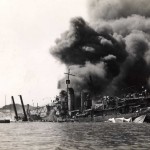 guys with the world if we attack first, and we are the bad guys with our own nation if we do not attack first. And, to top it off our intelligence isn’t always as reliable as it needs to be, so sometimes, such as on December the 7th, 1941, we are caught off guard, and completely by surprise, when we trusted an enemy to be as honorable as we try to be, and they feel no such obligation to honor. I guess that while we don’t like it when we are attacked without provocation, we must nevertheless, do the honorable thing, and not attack just because we anticipate an attack on us. If we were to do that, we would be no different than the nations we have to go to war with because they have invaded some other nation. Still, it is so hard to always be the nation that does the right thing, when we really don’t trust our enemies…because we know better.
guys with the world if we attack first, and we are the bad guys with our own nation if we do not attack first. And, to top it off our intelligence isn’t always as reliable as it needs to be, so sometimes, such as on December the 7th, 1941, we are caught off guard, and completely by surprise, when we trusted an enemy to be as honorable as we try to be, and they feel no such obligation to honor. I guess that while we don’t like it when we are attacked without provocation, we must nevertheless, do the honorable thing, and not attack just because we anticipate an attack on us. If we were to do that, we would be no different than the nations we have to go to war with because they have invaded some other nation. Still, it is so hard to always be the nation that does the right thing, when we really don’t trust our enemies…because we know better.
 Years ago, long before refrigeration was safe to use, most people had a more primitive way to keep foods fresh or frozen. I say that this was before refrigeration was safe to use, because mechanical refrigeration was actually invented in 1748 by William Cullen and was demonstrated at the University of Glasgow. This version was not used for any practical purpose, however. In 1805, an American inventor named Oliver Evans designed the first refrigeration machine, and the first person to make a practical refrigerating machine was Jacob Perkins in 1834, using Ether in a vapor compression cycle. American physician, John Gorrie, built a refrigerator based on Oliver Evans’ design in 1844 which he used to make ice to cool the air for his yellow fever patients. German engineer Carl von Linden, patented not a refrigerator but the process of liquefying gas in 1876 that is part of basic refrigeration technology. Refrigerators in the late 1800s and up until 1929 used toxic gasses, such as ammonia, methyl chloride, and sulfur dioxide as refrigerants, which were responsible for several fatal accidents in the 1920s. I suppose the cost and the dangers of these early models were the main reasons that people continued to used the old fashioned version.
Years ago, long before refrigeration was safe to use, most people had a more primitive way to keep foods fresh or frozen. I say that this was before refrigeration was safe to use, because mechanical refrigeration was actually invented in 1748 by William Cullen and was demonstrated at the University of Glasgow. This version was not used for any practical purpose, however. In 1805, an American inventor named Oliver Evans designed the first refrigeration machine, and the first person to make a practical refrigerating machine was Jacob Perkins in 1834, using Ether in a vapor compression cycle. American physician, John Gorrie, built a refrigerator based on Oliver Evans’ design in 1844 which he used to make ice to cool the air for his yellow fever patients. German engineer Carl von Linden, patented not a refrigerator but the process of liquefying gas in 1876 that is part of basic refrigeration technology. Refrigerators in the late 1800s and up until 1929 used toxic gasses, such as ammonia, methyl chloride, and sulfur dioxide as refrigerants, which were responsible for several fatal accidents in the 1920s. I suppose the cost and the dangers of these early models were the main reasons that people continued to used the old fashioned version.
The old fashioned way to keep foods fresh or frozen, involved using ice and snow, which they would bring in from the mountains, or use what was on the ground, if it was available. They would dig a cellar in the ground, 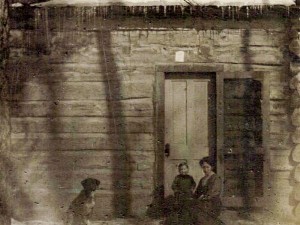 and line it with wood or straw. Then they packed it with snow and ice, and the food was placed in the cellar. It was this type of refrigeration system that my grandparents, Allen and Anna Spencer, were using at the time my Aunt Laura Fredrick was a very little girl in about 1913. My grandparents were living in a wooded area in northern Minnesota near American Falls. Grandpa was working in the lumber business at that time.
and line it with wood or straw. Then they packed it with snow and ice, and the food was placed in the cellar. It was this type of refrigeration system that my grandparents, Allen and Anna Spencer, were using at the time my Aunt Laura Fredrick was a very little girl in about 1913. My grandparents were living in a wooded area in northern Minnesota near American Falls. Grandpa was working in the lumber business at that time.
According to my Uncle Bill Spencer, who was their second child, the cellar was probably not needed much in the long winter months, because the house stayed pretty cold up there anyway. I’m sure that they had wood for a fire, but then again, I suppose that everything they burned, was something that could not bring in money. Also, they lived in a log cabin, that was apparently not very well built, or at least the spaces in between the logs were not really well packed with mud to keep the cold winter air on the outside of the house, where it belonged.
I’m not sure how far the cellar was from the house, because, I can’t see the house in the picture, so it might have been a little way from the house, or the picture might have been taken from the house. Either way, getting food from the cellar was a bit of a process, because you don’t want to upset the cooling process by removing the straw too often, as it was part of what kept the ice and snow from melting.
 I can’t say when my grandparents got their first real refrigerator, but I expect that like many people of that time, they were a little bit leery of the early refrigerators, after hearing about people dying because the gasses leaked out of the unit. I suppose it was the price people paid to be able to use some of the early inventions, but many people felt that the price was too high, so they waited until these new fangled gadgets were proven safe before they took a chance on them. And, I’m sure that like any new thing, they were pretty expensive early on too. The cellar would work just fine for now, and therefore, that is what my grandparents were using at that time in our family history. These days, we would be shocked at such a method of keeping food fresh.
I can’t say when my grandparents got their first real refrigerator, but I expect that like many people of that time, they were a little bit leery of the early refrigerators, after hearing about people dying because the gasses leaked out of the unit. I suppose it was the price people paid to be able to use some of the early inventions, but many people felt that the price was too high, so they waited until these new fangled gadgets were proven safe before they took a chance on them. And, I’m sure that like any new thing, they were pretty expensive early on too. The cellar would work just fine for now, and therefore, that is what my grandparents were using at that time in our family history. These days, we would be shocked at such a method of keeping food fresh.
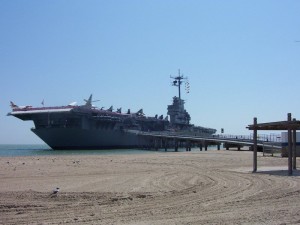
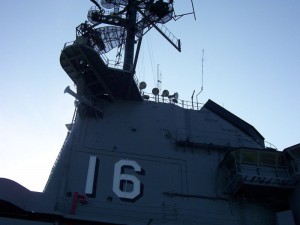 While Bob and I were in Texas on vacation in April of 2006, we had the wonderful opportunity to visit the USS Lexington…The Blue Ghost. This ship has a long and interesting history, and one I didn’t really know all that much about when I visited the ship. The ship we saw is not the original USS Lexington, but rather the one that replaced the original. The USS Lexington that we saw has an amazing history too…it is, in fact, a legend that was named for the American Revolution’s Battle of Lexington. On December 5, 1941, the original USS Lexington, which was one of the two largest aircraft carriers the United States had during World War II, was making its way across the Pacific in order to carry a squadron of dive bombers to defend Midway Island from an anticipated Japanese attack. The attack they anticipated did occur, but not where it had been expected. The attack was lodged on Pearl Harbor instead. The USS Lexington turned around and headed for Pearl Harbor, arriving on December 13th. That Lexington was later sunk.
While Bob and I were in Texas on vacation in April of 2006, we had the wonderful opportunity to visit the USS Lexington…The Blue Ghost. This ship has a long and interesting history, and one I didn’t really know all that much about when I visited the ship. The ship we saw is not the original USS Lexington, but rather the one that replaced the original. The USS Lexington that we saw has an amazing history too…it is, in fact, a legend that was named for the American Revolution’s Battle of Lexington. On December 5, 1941, the original USS Lexington, which was one of the two largest aircraft carriers the United States had during World War II, was making its way across the Pacific in order to carry a squadron of dive bombers to defend Midway Island from an anticipated Japanese attack. The attack they anticipated did occur, but not where it had been expected. The attack was lodged on Pearl Harbor instead. The USS Lexington turned around and headed for Pearl Harbor, arriving on December 13th. That Lexington was later sunk.
In early May, the first USS Lexington returned to the South Pacific to assist the USS Yorktown to fight against the Japanese offensive in the Coral Sea. On May 7th and 8th of 1942 planes from the USS Lexington helped sink the small Japanese aircraft carrier Shoho and participated in attacks on the large carriers Shokaku and Zuikaku. But, she was a major target of Japanese carrier planes and received two torpedo and three bomb hits. Initially, it appeared that the damage control efforts were successful, but she was racked by gasoline explosions early on the afternoon of May 8th. The fires were out of control, and it was clear that the Lexington was breathing her last breath. The ship was abandoned by her crew and it sunk. It was the first US aircraft carrier to be lost in World War II.
The second Lexington began its journey into fame on February 17, 1943, and it would serve longer and set more records than any other carrier in US Naval history. Originally to be named the Cabot, the name was changed after the sinking of the original Lexington in the Coral Sea. The Lexington became a part of the Fifth Fleet at Pearl Harbor. The ship took part in nearly every major operation in the Pacific Theater, serving 21 months in combat. It was here that the Lexington became famous in her own right. The Japanese radio station, the Tokyo Rose was always spreading rumors and propaganda. The station declared the Lexington sunk at least four times, but was proven wrong at the next battle, when the Lexington returned to the fight. I guess it must have been in an effort to save face that the Tokyo Rose dubbed the Lexington The Blue Ghost, indicating that it was a ghost ship returning to haunt the Japanese again and again. All the hard work paid off in the end though. The Lexington participated in the Great Marianas Turkey Shoot, the Battle of Leyte Gulf, and the Battle of the Philippine Sea. She received the Presidential Unit Citation and 11 Battle Stars during her service in World War II, and she was the first battleship into Tokyo Harbor for the Japanese peace treaty signing.
By the time we visited the second USS Lexington, she had been a museum since October of 1992. The ship had been decommissioned in August of 1990, after serving as a training ship for naval aviators in Pensacola, Florida since 1962. She was moved to her permanent location in Corpus Christi, Texas in January of 1992. We had the wonderful opportunity to explore the ship to our hearts’ content while we were there. It was quite interesting to us. I didn’t know much about how things were on a ship, but I found myself amazed over and over again. The way the crew lived, seemed so archaic to me, but I suppose that anyone who has ever served on a ship would tell me that it was all very normal. Finding your way around seemed so difficult to me, and I know we would have been lost repeatedly, had they not marked the directions with arrows on the floor and walls. It was hard to imagine just what being on board this ship in the midst of a battle must have felt. I don’t think anyone goes to war without a measure of fear. Nevertheless, there was no going back for the men, and later, women who 
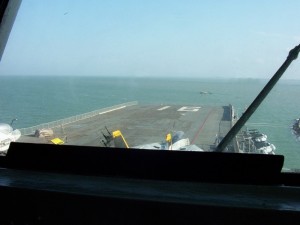 served on the Lexington. The Lexington was the first aircraft carrier to have women stationed on board. These men and women served courageously and honorably, some giving their lives on the Lexington fighting the battles that were laid out before her. Knowing the history of this great ship leaves me with an entirely new perspective about what an awesome ship it was, and it makes me glad I had the opportunity to tour the USS Lexington.
served on the Lexington. The Lexington was the first aircraft carrier to have women stationed on board. These men and women served courageously and honorably, some giving their lives on the Lexington fighting the battles that were laid out before her. Knowing the history of this great ship leaves me with an entirely new perspective about what an awesome ship it was, and it makes me glad I had the opportunity to tour the USS Lexington.

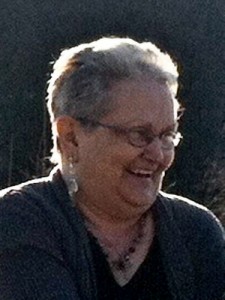 In times past, many people sent out Christmas cards. It was simply a part of the season. You always had to make sure you got them in the mail as early as possible, or they didn’t arrive in time for Christmas. As a young newlywed, I tried really hard to get that tradition started, but it seemed like I always got cards from people that I didn’t expect and then they didn’t get one from me, or the time to mail them was long gone before I could even wrap my mind around the fact that the Christmas season was once again upon us. Most often, it was all I could do to get my Christmas shopping done…much less send out Christmas cards. It just seemed a lost cause, and like most lost causes, it went the way of the wind early on in my marriage. With two kids to take care of, there just didn’t seem to be enough hours in the day for such an extra.
In times past, many people sent out Christmas cards. It was simply a part of the season. You always had to make sure you got them in the mail as early as possible, or they didn’t arrive in time for Christmas. As a young newlywed, I tried really hard to get that tradition started, but it seemed like I always got cards from people that I didn’t expect and then they didn’t get one from me, or the time to mail them was long gone before I could even wrap my mind around the fact that the Christmas season was once again upon us. Most often, it was all I could do to get my Christmas shopping done…much less send out Christmas cards. It just seemed a lost cause, and like most lost causes, it went the way of the wind early on in my marriage. With two kids to take care of, there just didn’t seem to be enough hours in the day for such an extra.
Christmas cards used to be something most people did. It was tradition, passed on from parent to child. My Aunt Jeanette Byer has always had her act together on the Christmas card thing, and every year…like clock work, I get a card from her right about this time. Yes, it came yesterday, so that is what prompted this story. When I get her card, and think about just how sweet she is to always think of me and so many other people at this time of year, I start to think that I really should send her a card back, and if I ever got that done, Aunt Jeanette would probably faint, because it has not happened at this point. I also got one from my cousin, Shirley Cameron last year, and of course, it was too late to send one back by then, but it did show me just how sweet my cousin, 
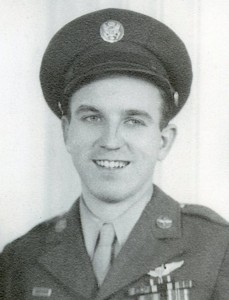 Shirley is, and it is my hope that she knows just how much I love her, even in the absence of a Christmas card.
Shirley is, and it is my hope that she knows just how much I love her, even in the absence of a Christmas card.
As the years have gone by, I have started receiving fewer and fewer Christmas cards, and while it could be because I never get any sent out, I have a feeling that fewer and fewer people send them out anymore. With the closer connections we have through Facebook, and the ability to send out e-cards, I think the practice of sending out Christmas cards is quickly becoming a thing of the past. Modern technology has a way of doing that, and while modern technology is vital to our way of life, maybe it is a little bit sad to see traditions like letters and Christmas cards go by the wayside. I know my Uncle Bill Spencer would feel that way, because he loved letters. He wanted the handwriting of the individual to have as a keepsake for all time. I can understand that now, where I could not before. Every time I see Uncle Bill’s handwriting, I know it instantly. I have seen it so often that it is as much him as he is. That is a tribute to the amount of writing he did on the family history all these years.
My dad loved Christmastime. As a Christian, it marks the birth of our Lord and Saviour, so it is a day that is important to us. I know that every time I see my dad’s handwriting, it makes my heart jump a little bit. It is like a connection to him that lives on here, even though he lives in Heaven now. For that love of handwriting, I have to thank my Uncle Bill, because it was he who first pointed out its importance. I came across a Christmas card sent home to Uncle Bill, from my dad during World War II, while he was in training in Salt Lake City, Utah. 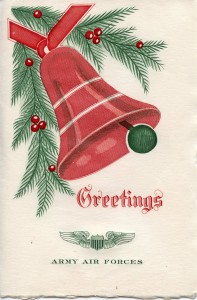
 It was among the things that my grandmother kept, and then gave back to him later on, and while the only handwriting on it is simply my dad’s name, I know that the card was among the things that were dear to his brother’s heart, because it was sent to him from his brother, Allen Spencer, who was spending Christmas far from family in 1943. I’m sure that it was a lonely time for both of them, because they were very close, and it was a way for my dad to reach out across the miles and let his brother know, that he loved him. I guess that is really what Christmas cards, or any other cards are all about. Christmas is simply a season for showing your love, whether you mail a card, write a letter, send an e-card, or make an announcement on Facebook. It’s all about showing your love.
It was among the things that my grandmother kept, and then gave back to him later on, and while the only handwriting on it is simply my dad’s name, I know that the card was among the things that were dear to his brother’s heart, because it was sent to him from his brother, Allen Spencer, who was spending Christmas far from family in 1943. I’m sure that it was a lonely time for both of them, because they were very close, and it was a way for my dad to reach out across the miles and let his brother know, that he loved him. I guess that is really what Christmas cards, or any other cards are all about. Christmas is simply a season for showing your love, whether you mail a card, write a letter, send an e-card, or make an announcement on Facebook. It’s all about showing your love.
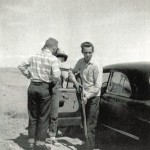 You have heard that for everything there is a season, and that is true in so many ways. One that I doubt if you ever thought about, is the seasons for things we do. Now this isn’t going to be a serious story about philosophical things, but rather it will follow a little bit different path. Typically, for most men, there is football season, baseball season, basketball season, and hunting season, with a few others thrown in there for some people. In times past, most women would have left this to the men, but that has changed, as there are probably an almost equal amount of women that like to do these things too.
You have heard that for everything there is a season, and that is true in so many ways. One that I doubt if you ever thought about, is the seasons for things we do. Now this isn’t going to be a serious story about philosophical things, but rather it will follow a little bit different path. Typically, for most men, there is football season, baseball season, basketball season, and hunting season, with a few others thrown in there for some people. In times past, most women would have left this to the men, but that has changed, as there are probably an almost equal amount of women that like to do these things too.
As to the season for hunting…which I think just got over…but since my husband and I don’t hunt, I can’t say for sure. I do know that for years my parents went hunting, and I can remember the wild meat…cooked to perfection by my mom. It was so good. Not everyone can cook wild meat to make it not taste gamey, but she could. They went hunting with my grandparents, and I know that my uncles did too.  Especially as young men. I doubt if my aunts went, as girls anyway, but I could be wrong on that. I do know that a lot of my cousins hunt…both male and female cousins, so it is something that runs in our family on both sides. Lots of the girls like to go hunting with their husbands, but the thing I find especially endearing are the girls who like to go hunting with their dads, such as my cousin, Jamie Patsie, who was not deterred when her husband Kevin couldn’t go hunting with her. She just talked to her dad, Terry Limmer, and the two of them made a day of it. That is such a cool thing too, because it gave them some father/daughter time.
Especially as young men. I doubt if my aunts went, as girls anyway, but I could be wrong on that. I do know that a lot of my cousins hunt…both male and female cousins, so it is something that runs in our family on both sides. Lots of the girls like to go hunting with their husbands, but the thing I find especially endearing are the girls who like to go hunting with their dads, such as my cousin, Jamie Patsie, who was not deterred when her husband Kevin couldn’t go hunting with her. She just talked to her dad, Terry Limmer, and the two of them made a day of it. That is such a cool thing too, because it gave them some father/daughter time.
The little girls in the family maybe can’t go hunting with their dads yet, but that certainly didn’t stop Meadow Nordquist from going out to see what her dad, Aron had shot, and even taking the opportunity to pose for a victory shot with him. She was very excited about her dad’s conquest. I think her sister, Addie was a little put off by the idea of sitting on a dead animal, so she would have none of this whole “picture with her dad’s conquest” thing. I suppose the time will come when she will think differently about that. It may be with her husband, and then her dad though. Time will tell on that, but little  Meadow was very excited to see what her dad had shot…and I’m sure they will all enjoy the meat.
Meadow was very excited to see what her dad had shot…and I’m sure they will all enjoy the meat.
Like every other season, hunting has a season, and when that season is over, it’s over. I’m sure it is something everyone hates to have happen…especially if their hunt was not successful, but it is inevitable nevertheless. So, all I can say to that is that it is a good thing that football season is still going on, and basketball season will follow, and baseball after that. Before they know it, hunting season will be upon them again, and they will be back out there looking for the best buck. That’s just the way it is…to everything there is a season.
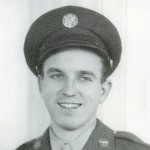 Sometimes we think we know the whole story, and other times, we are pretty sure we don’t know the story at all. For me, the attack of Pearl Harbor is one that has seemed somewhat fuzzy. I mean I know that the Japanese attacked Pearl Harbor without warning on December the 7th of 1941…but why exactly. I have to wonder if I am the only one who isn’t exactly sure why my dad had to go to war in March of 1943 at the age of 18 years, along with several uncles. I know that his family knew that it was coming, and they were dreading it very much, but it was inevitable. We had been attacked. We must retaliate when we are attacked!! I understood that…but why were we attacked, and was it without provocation?
Sometimes we think we know the whole story, and other times, we are pretty sure we don’t know the story at all. For me, the attack of Pearl Harbor is one that has seemed somewhat fuzzy. I mean I know that the Japanese attacked Pearl Harbor without warning on December the 7th of 1941…but why exactly. I have to wonder if I am the only one who isn’t exactly sure why my dad had to go to war in March of 1943 at the age of 18 years, along with several uncles. I know that his family knew that it was coming, and they were dreading it very much, but it was inevitable. We had been attacked. We must retaliate when we are attacked!! I understood that…but why were we attacked, and was it without provocation?
Then I came across something that happened on Dec 1, 1941. This was the day that the Japanese made the decision to attack Pearl Harbor. This had been a possibility since the 1920s, but in 1931, with the Japanese invasion of Manchuria things got really tense. Japan was insistent on invading other countries, and were slowly moving into China. Beginning in 1938, the United States adopted increasingly tighter trade restrictions with Japan. Nevertheless, Japan would not be deterred from its expansionist policies, or from signing the Tripartite Pact in 1940 with Nazi Germany and Fascist Italy, officially forming the Axis Powers. In 1940, Japan invaded French Indochina so they could embargo all imports into China including war supplies from the United States. Some of these facts I knew, and some I didn’t. This is, of course, a very shortened version, but you can see that Japan was becoming increasingly more dangerous to the world, and to everyone in it.
On November 7, 1941, Secretary of State, Cordell Hull warned President Franklin Roosevelt’s cabinet that an  attack on the United States by Japan could happen at any time…without warning. On November 9th, Winston Churchill, who is my 15th cousin once removed, told the United States that if we went to war with Japan, the British Empire would declare war on Japan “within the hour.” It was a heavy responsibility for the United States, and for Secretary of State Hull. Nevertheless, something had to be done, and the world was looking to the United States to make the first move.
attack on the United States by Japan could happen at any time…without warning. On November 9th, Winston Churchill, who is my 15th cousin once removed, told the United States that if we went to war with Japan, the British Empire would declare war on Japan “within the hour.” It was a heavy responsibility for the United States, and for Secretary of State Hull. Nevertheless, something had to be done, and the world was looking to the United States to make the first move.
The decision to go to war is a difficult one, and one that I do not believe any civilized nation takes lightly. I’m sure that is why so many presidents have tried every possible restriction against some of the crazy dictators in this world. The problem is that so many of those dictators are not moved from their agendas…no matter what. Secretary of State Hull decided to try one more time, and so he wrote the Hull Note on November 26, 1941, which outlined ten proposals, some of which matched earlier Japanese proposals, but of others, Hull knew meant he was basically declaring war on Japan. The agreement would have to be made by November 29, and of course, history tells us that Japan did not agree. While Australia tried an offer to act as mediator between the United States and Japan on November 29th, they were told that the opportunity to settle this was past. On December 1, 1941, Japan’s Emperor Hirohito declared war against the United States, Britain, and the Netherlands, after rejecting the demands of the United States in the Hull Note, which the Japanese later dubbed The Hull Ultimatum, as a way of making the United States look like they were to blame for all this.
It was this action…on this day in history, and the events leading up to this action, and those that would follow, including the attack on Pearl Harbor on December 7, 1941 that drew the United States and our allies into World War II, and that would ultimately bring about my dad’s part in that war…as well as the part played by so many others, including a number of my uncles. War is a horrible event, and one that I truly don’t believe anyone 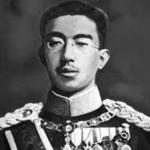 wants to be a part of, but sometimes it is inevitable. When a nation, such as Japan decides to take over the world…one weaker country at a time, someone has to step up and put a stop to it. Unfortunately, history has placed that responsibility in the hands of the United States many times. There are people who think we should just stay out of it, but if we did, just how long would it be before that nation came after us, because we appeared weak too. We might be able to fight them off…unless we have allowed our military might to be reduced to a point of making us as weak as some of these other nations. If we couldn’t fight them off, then our nation would lose it’s many freedoms, and we would find ourselves living under a dictator too. While I hate war too, I am not willing to lose the freedoms our military personnel have fought so hard for…are you?
wants to be a part of, but sometimes it is inevitable. When a nation, such as Japan decides to take over the world…one weaker country at a time, someone has to step up and put a stop to it. Unfortunately, history has placed that responsibility in the hands of the United States many times. There are people who think we should just stay out of it, but if we did, just how long would it be before that nation came after us, because we appeared weak too. We might be able to fight them off…unless we have allowed our military might to be reduced to a point of making us as weak as some of these other nations. If we couldn’t fight them off, then our nation would lose it’s many freedoms, and we would find ourselves living under a dictator too. While I hate war too, I am not willing to lose the freedoms our military personnel have fought so hard for…are you?
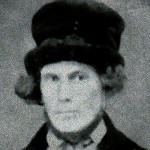
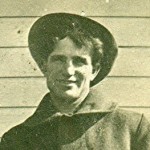 When a name is passed down from generation to generation dating back to the 1400s or even further back, it is often not easy to say just how that name got started, but once in a great while, we are able to find out for sure, because prior to a certain point, that name did not appear. Such is the case with my dad’s name in his family line. I have searched the family history pretty extensively, and while I could be mistaken, I don’t think that I am…for this part of the line anyway. My dad’s name is Allen Spencer, as was his dad’s and great grandfather’s. The name, Allen was first introduced with my dad’s great grandfather…as near as I can tell. It did not come from his parents, but rather from his grandparents. I’m sure that at this point, your are confused, so let me clarify this.
When a name is passed down from generation to generation dating back to the 1400s or even further back, it is often not easy to say just how that name got started, but once in a great while, we are able to find out for sure, because prior to a certain point, that name did not appear. Such is the case with my dad’s name in his family line. I have searched the family history pretty extensively, and while I could be mistaken, I don’t think that I am…for this part of the line anyway. My dad’s name is Allen Spencer, as was his dad’s and great grandfather’s. The name, Allen was first introduced with my dad’s great grandfather…as near as I can tell. It did not come from his parents, but rather from his grandparents. I’m sure that at this point, your are confused, so let me clarify this.
My fourth great grandfather, William Spencer, who was born on July 22, 1745, married a woman named Mercy Allen sometime before 1790. The exact date is unknown, but the only child anyone seems to know about, Christopher was born in 1790. Christopher Spencer was my third great grandfather, and the father of the first recorded Allen Spencer…who was, of course named after his grandmother…Mercy Allen. From that point on 
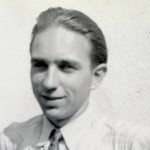 there would be an Allen from each generation, with only one exception that I am aware of…my sister, Allyn who would have been Allen, had she been a boy. Since she was not, my parents did the closest name they could…Allyn. Having all daughters, I’m sure you would expect that the Allen Spencer line would end with my parents, but it did not, because my sister, Caryl, upon the birth of her son, named him Allen Spencer Beach…thereby continuing the tradition. With the great care that was taken to continue the Allen Spencer name throughout the generations, I have to say that they succeeded…albeit with a little bit of creativity. While I don’t always think of my sister as being an Allen, she did go to school with a boy named Allyn, who was in fact called Allen. It is all in where you place the accent. We always pronounced hers like Lynn, with an A in front. It really had to be continued…it’s tradition. And it is my hope that my nephew, Allen will continue the tradition, or that someone else in the family will do so, because it seems a shame to let it end now.
there would be an Allen from each generation, with only one exception that I am aware of…my sister, Allyn who would have been Allen, had she been a boy. Since she was not, my parents did the closest name they could…Allyn. Having all daughters, I’m sure you would expect that the Allen Spencer line would end with my parents, but it did not, because my sister, Caryl, upon the birth of her son, named him Allen Spencer Beach…thereby continuing the tradition. With the great care that was taken to continue the Allen Spencer name throughout the generations, I have to say that they succeeded…albeit with a little bit of creativity. While I don’t always think of my sister as being an Allen, she did go to school with a boy named Allyn, who was in fact called Allen. It is all in where you place the accent. We always pronounced hers like Lynn, with an A in front. It really had to be continued…it’s tradition. And it is my hope that my nephew, Allen will continue the tradition, or that someone else in the family will do so, because it seems a shame to let it end now.
The rather funny thing about the name, Allen being a last name is that my dad always joked with us when we or 
 anyone else named their kids a name that could have been a last name. Names like Ryan, Garrett, and Kellie, while maybe not spelled exactly like the last name they came from, were nevertheless, originally last names. It’s funny that Dad teased about those names, saying they were last names, but didn’t make the same connection with his own name. I’m sure that was because he knew that it had been his dad’s and great grandfather’s name too. Still, like it or not, Dad’s name was originally the last name of his third great grandmother. Sorry to say it, Dad…but, that was once a last name!!
anyone else named their kids a name that could have been a last name. Names like Ryan, Garrett, and Kellie, while maybe not spelled exactly like the last name they came from, were nevertheless, originally last names. It’s funny that Dad teased about those names, saying they were last names, but didn’t make the same connection with his own name. I’m sure that was because he knew that it had been his dad’s and great grandfather’s name too. Still, like it or not, Dad’s name was originally the last name of his third great grandmother. Sorry to say it, Dad…but, that was once a last name!!
 It’s tradition…looking at your life on Thanksgiving Day, to give thanks for the many blessings that you have received over the year, and the years past. We take stock of everything. The sad things are set aside for review on another day, and we focus on our family, friends, homes, and jobs. And we look to the future and what it promises to bring for us. It isn’t all about things, and in fact, things are often the furthest things from our minds. We are much more focused on our loved ones. Of course, this isn’t the only day we give thanks for our loved ones, nor should it be, but sometimes we find ourselves so preoccupied with our daily lives, that we don’t really notice the blessings that are all around us every day.
It’s tradition…looking at your life on Thanksgiving Day, to give thanks for the many blessings that you have received over the year, and the years past. We take stock of everything. The sad things are set aside for review on another day, and we focus on our family, friends, homes, and jobs. And we look to the future and what it promises to bring for us. It isn’t all about things, and in fact, things are often the furthest things from our minds. We are much more focused on our loved ones. Of course, this isn’t the only day we give thanks for our loved ones, nor should it be, but sometimes we find ourselves so preoccupied with our daily lives, that we don’t really notice the blessings that are all around us every day.
This tradition was felt to be so important, that on October 3, 1783, President George Washington issued a proclamation making the 26th day of November as a national day of prayer and thanksgiving…a day to give thanks to Almighty God with grateful hearts for all He has done for us. While the date has been changed to the 4th Thursday of November now, the tradition has remained intact. Somehow though, many people have forgotten the prayer and thanksgiving part of the day, and remember only the food part of the day. There is nothing wrong with feasting…in fact God set aside feast days for His people too, but we must remember that the feast part of the day is supposed to coincide with the prayer and thanksgiving part of the day.
It is my belief that most people are thankful for what they have, but there is a difference between being thankful for things, and giving thanks for things. I believe that difference is acknowledging the one who gave all these things to you…God. I 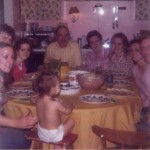 suppose that people who don’t believe in God would see no reason to be thankful to Him, but for me, with my deep faith in God, blessing couldn’t come from anywhere else. God loves me and He is the one who blesses me. Therefore, it is to Him…Almighty God that I give thanks on this Thanksgiving Day. I, like so many other people, neglect the need to thank God in the way that I really should, and maybe having a national day of Thanksgiving, will give us all the opportunity to step back from our busy lives and take a good look at all we have been blessed with. And maybe we can all take a few minutes out of this day to acknowledge God’s grace and loving kindness toward us…and give Him thanks for all he does for us. Happy Thanksgiving to all…and thanks be to God for His loving kindness and all the blessing He has given me and my family.
suppose that people who don’t believe in God would see no reason to be thankful to Him, but for me, with my deep faith in God, blessing couldn’t come from anywhere else. God loves me and He is the one who blesses me. Therefore, it is to Him…Almighty God that I give thanks on this Thanksgiving Day. I, like so many other people, neglect the need to thank God in the way that I really should, and maybe having a national day of Thanksgiving, will give us all the opportunity to step back from our busy lives and take a good look at all we have been blessed with. And maybe we can all take a few minutes out of this day to acknowledge God’s grace and loving kindness toward us…and give Him thanks for all he does for us. Happy Thanksgiving to all…and thanks be to God for His loving kindness and all the blessing He has given me and my family.
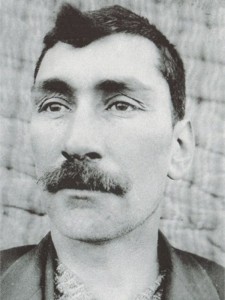 Like many people, my great grand uncle, Cornealius Spencer and his wife Leola Stinson Spencer left Iowa and made their way to Oklahoma in the spring of 1893. With them were their children and Leola’s parents. They had heard that the government was giving away land and they had decided to make a new start. The homestead they received was 160 acres, but the land came with qualifications. The homestead owner was required to fence the land, build a building, and live on the land for a period of one year before it became theirs. When I think of those reasonable qualifications, in light of today and all we have now, I think that the land they received was really cheap…and maybe it was, but times were different then, and living on a piece of land that had no improvements, and the soil was hard and rocky, might not have been so easy. They didn’t have the farming equipment we have now, so they had to till the ground with a team of horses or a yoke of oxen and a hand plow. They couldn’t just run down to the lumber store to buy building supplies. They had to cut down their own logs to build a home, or live in a sod hut…which many people then did for a time.
Like many people, my great grand uncle, Cornealius Spencer and his wife Leola Stinson Spencer left Iowa and made their way to Oklahoma in the spring of 1893. With them were their children and Leola’s parents. They had heard that the government was giving away land and they had decided to make a new start. The homestead they received was 160 acres, but the land came with qualifications. The homestead owner was required to fence the land, build a building, and live on the land for a period of one year before it became theirs. When I think of those reasonable qualifications, in light of today and all we have now, I think that the land they received was really cheap…and maybe it was, but times were different then, and living on a piece of land that had no improvements, and the soil was hard and rocky, might not have been so easy. They didn’t have the farming equipment we have now, so they had to till the ground with a team of horses or a yoke of oxen and a hand plow. They couldn’t just run down to the lumber store to buy building supplies. They had to cut down their own logs to build a home, or live in a sod hut…which many people then did for a time.
The families arrived with two covered wagons and Leola with two small children…four year old Oren and two year old Edith. The wagons were pulled by a pair of oxen. With no bits or lines to guide the oxen. They pulled the wagon by a yoke and Leola had to guide them by the voice commands or “gee” and “haw” for left and right and “whoa” for stop. The milk cow was tied to the wagon and the family brought along a coop of chickens. They camped out at night, and let the chickens eat the bugs in the area. There were no roads to get to Oklahoma, so they had to simply go across the prairie.
Once they arrived in Blaine county, the men filed on two places that were next to each other. Each place had a spring for water, until a well could be dug. They dug a dugout near the spring, and were settled by June 12, 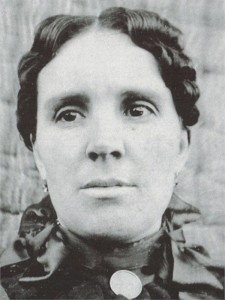 1893, when their new daughter Elsie Jane was born. They lived in the dugout until a home could be built. There were no towns close, so they had to rely on what they could hunt. Thankfully there was an abundance of deer, rabbits, turkeys, and even squirrels, so they never went hungry. Both Cornealius and Leola were excellent shots, so it didn’t matter who was available to hunt, both were able to get food for the family.
1893, when their new daughter Elsie Jane was born. They lived in the dugout until a home could be built. There were no towns close, so they had to rely on what they could hunt. Thankfully there was an abundance of deer, rabbits, turkeys, and even squirrels, so they never went hungry. Both Cornealius and Leola were excellent shots, so it didn’t matter who was available to hunt, both were able to get food for the family.
I can fully understand why it was so hard to make a homestead work now, because the supplies the homesteaders needed were not readily available. Many people gave up and headed back east, but my great grand uncle and his family stuck it out, and spent their remaining years in Oklahoma. They would raise their ten children there and were very successful in their endeavors. Homesteading wasn’t designed to be easy. Getting 160 acres of land is a big deal, and while the land ended up being free in the monetary sense, it certainly did not in the blood, sweat, and tears sense. The homesteader earned every inch of that property.

